Inside Canada’s largest abandoned city, vacant since 1935
A fascinating documentary takes viewers on a tour of Canada’s largest abandoned town, once home to 3,000 people but falling into disrepair in 1935.
Urban explorer Dave, who runs the YouTube channel Freaktography and not giving his last name, he headed into the wilderness of British Columbia to explore a former mining base called Anyox.
In the film’s introduction, he gives some background on the history of the remote town, explaining that it was originally built in 1912 by a company called Granby Consolidated Mining, Smelting and Power Company for “the mining and production of copper, silver and gold.”
While the film features a mix of vintage photographs and contemporary footage, he continues: ‘During its 25-year existence, Anyox’s mines and smelters produced four tons of gold, 230 tons of silver and 340,000 tons of copper.’
During the production process, steam and electric locomotives were used to transport large quantities of ore from the mine to the crusher, where it was reduced in size, Dave says.
Urban explorer Dave, who runs the YouTube channel Freaktography and doesn’t give his last name, traveled to British Columbia to explore a former mining base known as Anyox
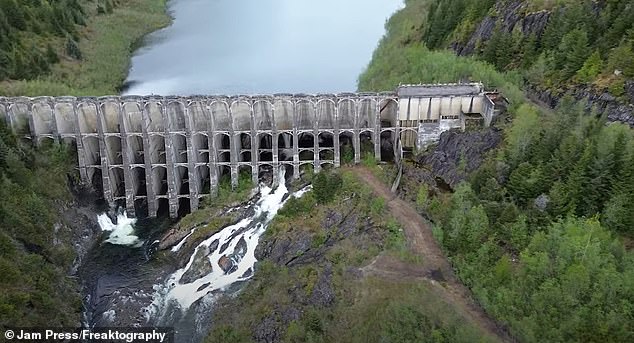
The town was originally built in 1912 by a company called Granby Consolidated Mining, Smelting and Power Company for mining. Above is the impressive concrete dam
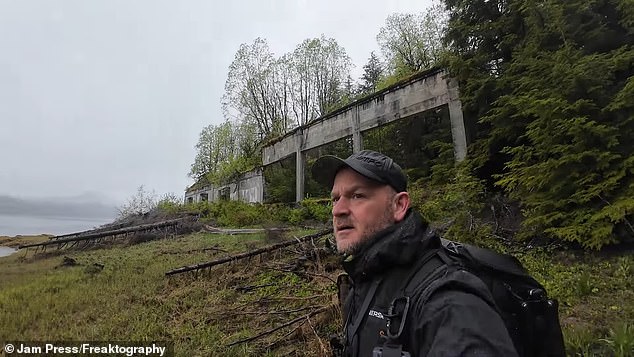
To visit Anyox, Dave enlisted the help of local guide Rob Bryce
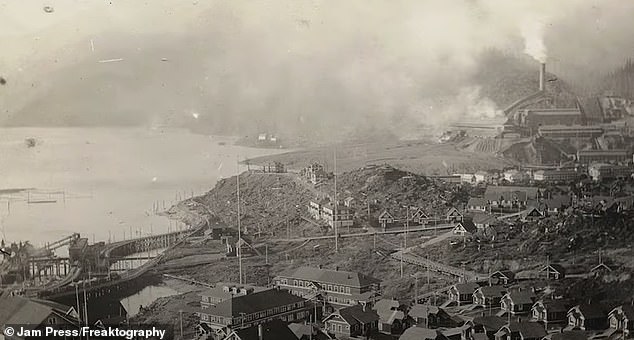
“During Anyox’s 25-year history, the mines and smelters produced four tonnes of gold, 230 tonnes of silver and 340,000 tonnes of copper,” Dave explains
In the final part of the process, the crushed ore was transported to the concentrator on the waterfront, where it was converted into usable raw material.
In its heyday, Anyox was processing 5,400 tonnes of ore per day, Dave says.
To provide the electricity supply, a concrete hydroelectric power plant was built. At 48 metres high, it was for many years the tallest structure of its kind in Canada.
There were also coal fired generators on the mine site.
To visit Anyox, Dave enlisted the help of local guide Rob Bryce.
They drove for four hours from the town of Terrace to a former village called Kitsault and from there they took a boat trip to their final destination.
Dave described what he saw as they approached the deserted town: “It wasn’t long before we saw the tall brick chimney rising high above the trees.
‘From there I would be able to see with my own eyes the abandoned coke factory that greets all visitors to Anyox.
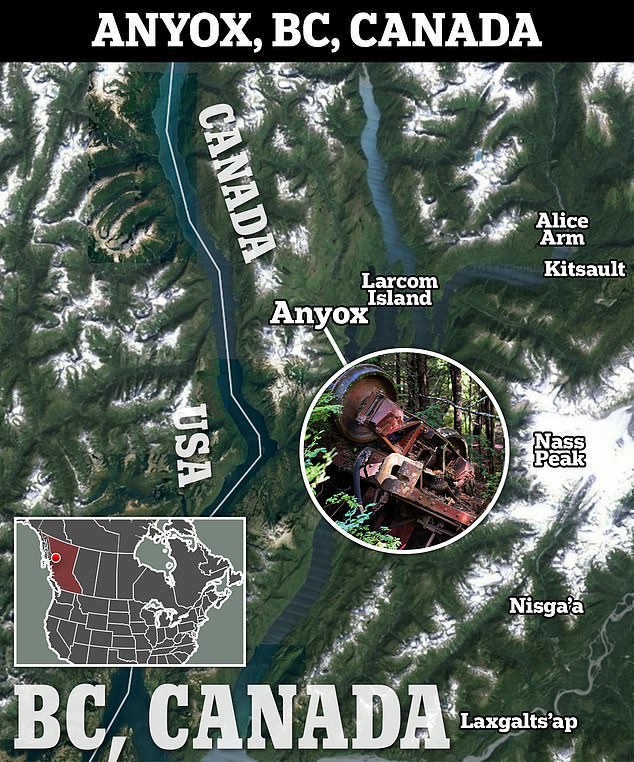
They drove for four hours from the town of Terrace to a former village called Kitsault, and from there they took a boat trip to their final destination
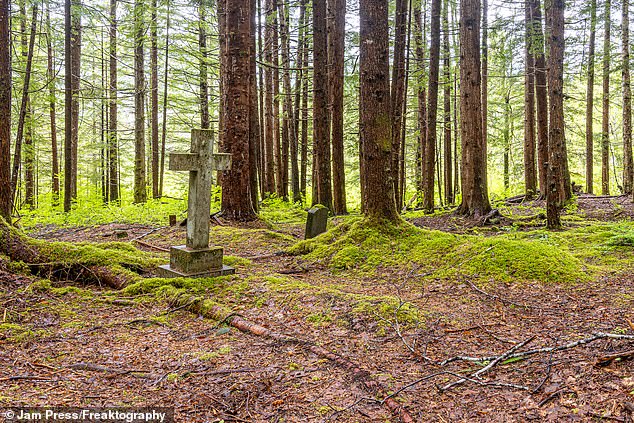
Dave says one of the creepiest places in Anyox is the cemetery. At one point he finds a gravestone from 1935 of a man who died at the age of 70
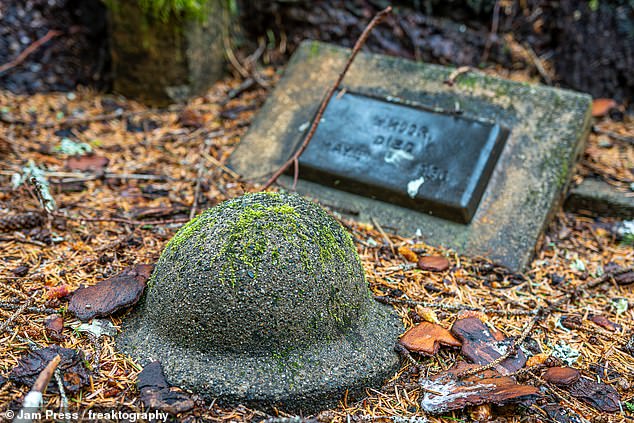
There are also several graves of soldiers from the First World War who returned to Anyox after their military service to ‘live their lives’ and work there.
‘(Then came) the store, the power plant and then Granby Bay and the mountains surrounding Anyox.’
The two men were greeted by Kevin Krogstad and Robbie Nutter, the only residents of Anyox who are working there to relocate the remaining snails.
To move around the vast terrain, they used all-terrain vehicles.
In the video, Dave visits the dilapidated power station that once ‘powered the mines, smelters and homes of Anyox’, the secondary power station that still looks neglected, what’s left of the supermarket and the ‘creepy’ cemetery.
As he wanders around, the filmmaker finds remnants of former residents, including rusty bed frames and even an old car.
He says one of the most disturbing places in Anyox is the cemetery.

As he wanders around, the filmmaker finds remnants of former residents, including rusty bed frames and even an old car
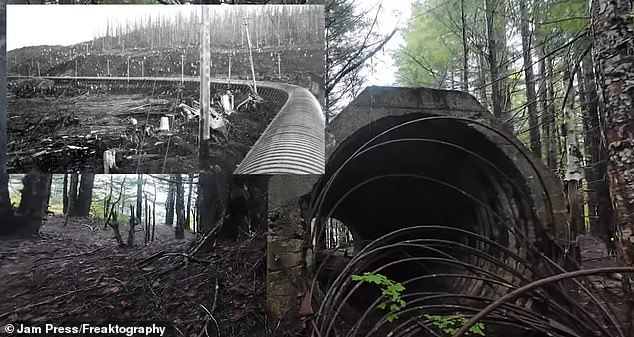
A fire ‘swept away the remains of Anyox, leaving only the large concrete and steel structures still visible today’
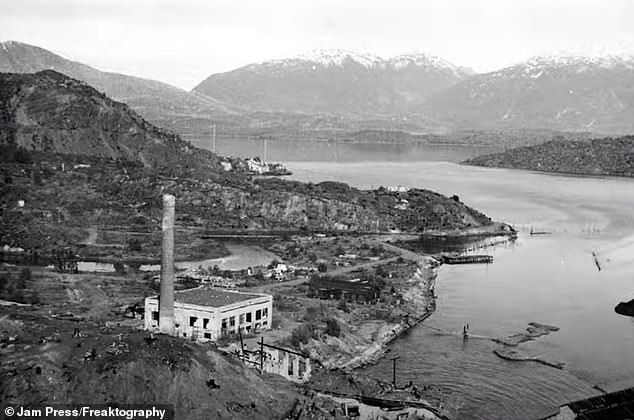
While it was in operation, the city saw 480 births, 160 marriages and 320 deaths
At one point he finds a 1935 gravestone of a man who died at the age of 70. Many graves, however, are unmarked.
There are also several graves of soldiers from the First World War who returned to Anyox after their military service to continue their lives and work there.
Of the 400 men who left, fewer than 60 returned.
Those who returned were promised ‘a soldier’s burial’ by the townspeople and their graves are distinguished by memorial helmets of concrete and cement borders.
Dave provides more insight into life in Anyox and the hardships endured there: ‘The copper mining town… was active between 1914 and 1935.
‘During this period there were 480 births, 160 marriages and 320 deaths.
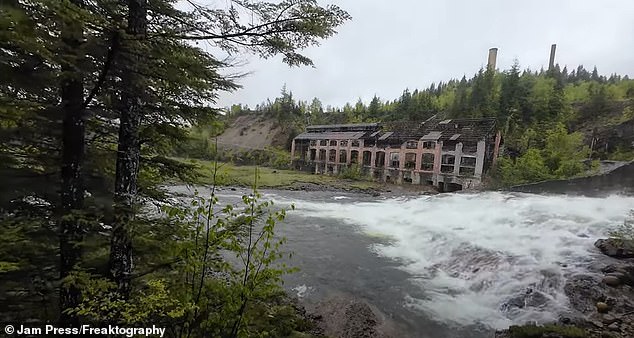
Many viewers have thanked Dave for sharing his video tour. One commenter wrote: ‘This was an excellent exploration. Such an amazing adventure, the waterfalls, the scenery, breathtaking’
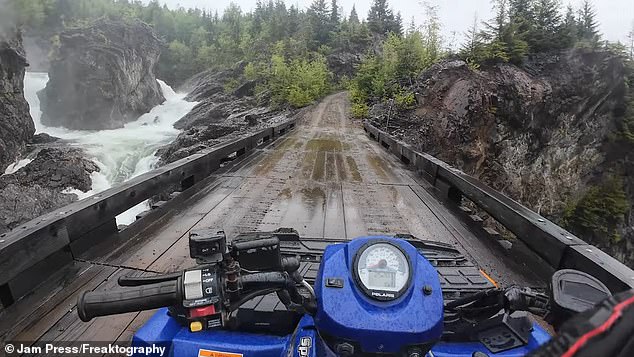
To explore the vast terrain, they used ATVs before stopping to explore on foot
‘Many of the deaths at Anyox were stillbirths and infant deaths, largely due to toxic emissions from the smelter and large-scale cyanide waste.
‘Moreover, the Spanish flu pandemic of 1918 is clearly visible in the number of deaths (here) at that time.’
According to an article on the University of British Columbia website, Anyox was discontinued in 1935 due to a drop in copper prices as a result of the Great Depression.
The author explains: ‘By early 1935, nearly 50 million kilograms of unsold copper were stored near the port, equivalent to three years’ production.
When mining operations were halted on July 31, 1935 and the workers were laid off, all the town’s residents lost their source of income and were left homeless almost overnight.
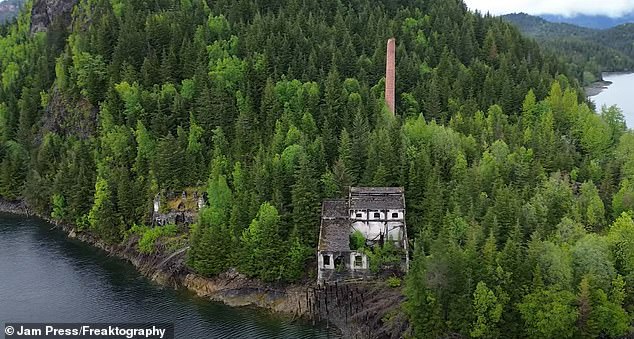
According to an article on the University of British Columbia website, Anyox was discontinued in 1935 due to a collapse in copper prices following the Great Depression.
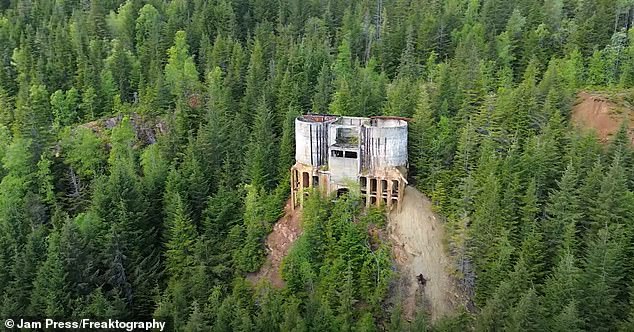
In addition to Anyox’s demise, a forest fire broke out in 1946
‘As for the buildings and mining sites, all salvageable materials were dismantled and shipped to other towns and villages.’
Anyox’s death was compounded when a forest fire broke out in 1946. Anyox.com notes that the fire “wiped out the remains of Anyox, leaving only the large concrete and steel structures, still visible today.”
Many viewers thanked Dave for sharing his video tour.
One commenter wrote: ‘This was an excellent exploration. Such a great adventure, the waterfalls (and) the scenery (are) breathtaking. Great work!’
Another viewer revealed his ties to the place, saying: ‘So much family history. My dad was a teenager in Anyox and my grandfather was the manager of the store, along with my aunt who was the bookkeeper!’
